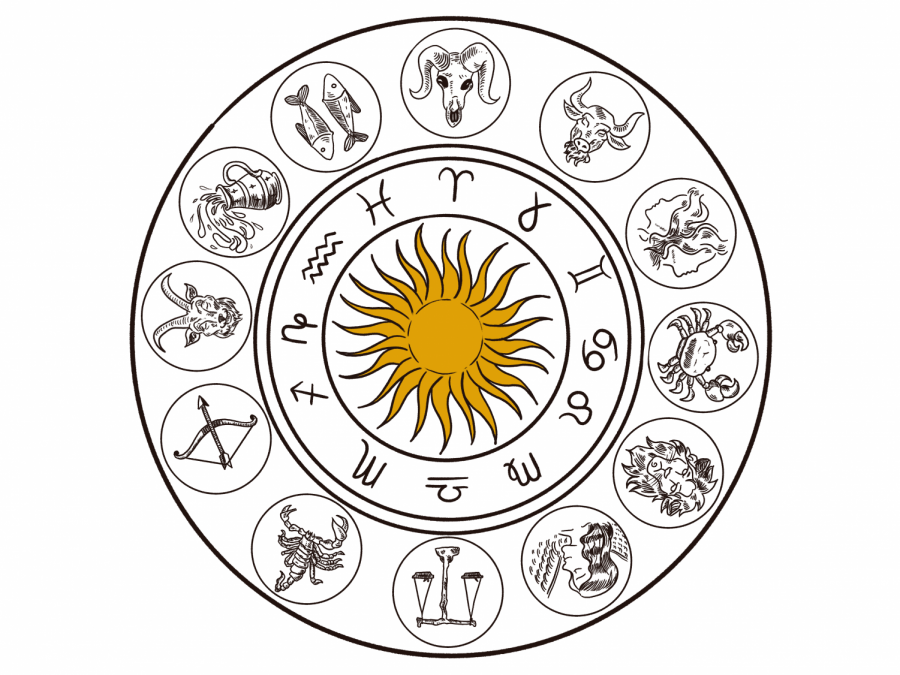Astrology Thrives During the Pandemic
May 30, 2021
Millions of people around the world are posting about their newfound “spiritual journey,” educating themselves on the universe and the Law of Attraction, which gained traction this year amongst young people everywhere. The Law of Attraction is the idea that we live in a reality that we can shape through manifestation, that we can achieve anything by believing in the power of the universe. This newfound popularity in the United States makes sense due to the fact that the coronavirus has left us stuck at home, and with a variety of mental health challenges from which people are desperately looking to rid themselves. The idea that a person could create a reality where these mental health problems are minimized makes these methods attractive to many. Much of the traction gained in the Western world toward a shift away from traditional monotheistic religions has come from younger users on TikTok. On TikTok, #manifestation has a 8.1 billion views, #astrology has 17.1 billion and #spiritualAwakening has 1.4 billion.
To an onlooker, this might seem like harmless experimentation with crystals, tarot readings, incense, and funny memes—it was an exciting new trend for people to learn about and try. But as more and more attention was put onto this way of life, there was a large opportunity for misinformation to spread. Content creators claiming to be experts were profiting off of the curiosity and desperation of young people, ignoring those who have had these practices as a part of their cultures and religions for generations. This is a way of whitewashing the traditions of people of color, which is commonly seen on social media with trends. The same people who might have felt out of place growing up with these customs are now feeling alienated yet again by the media silencing them on these topics. It is essential for people who are discovering these philosophical traditions to become informed of the diverse origins and rich history; seeking knowledge from the real experts, not social media gurus.
Neith Pereira of the Reynolds Media Lab says “Individuals taking part in the white-washed version of the practices have also been criticized for cherry-picking. In this, users choose to only participate in the most beneficial parts of the culture and not practice the traditional practice to its full extent.” As with all cases of cultural appropriation, it is up to the person choosing to discover a new culture to learn about the history and purpose of this practice. A writer for A.Side, Alex Verman, walked through her process of educating herself on how to mindfully practice these customs, interviewing astrology practitioner Dolly Sparks, who does not oppose new learners but says “If you’re using a form of astrology that’s from a specific culture, what do you know about it? I think it’s important to know answers to that question.” Later in the article, Verman observes that “Orientalized totems and objects like incense, amulets, healing broths, and, yes, astrology from African and Asian cultural traditions—all picked, mixed, mismatched, repackaged, and sold by white retailers for white audiences.”
These religious beliefs first started to migrate over to the realm of pop culture when the first horoscope was printed in the British newspaper, Sunday Express, on August 24th, 1930. By the middle of the 20th century, the first horoscope printed for Princess Margaret Rose created a popular column in most newspapers where people could read their daily horoscope according to their birthday. In the period of time following the Great Depression, people felt as though the world was spinning aimlessly and were in need of some kind of certainty.
Even before this, the use of astrology-based belief systems dates back to the ancient civilization of Babylon. Historians see present-day Iraq as the origin point of astrology, where horoscopes were first developed and spread to Northern Africa and Europe. Starting in 142 C.E and prospering around 500 B.C during the era of the Contention of a Hundred Schools of Thought, the philosophical beliefs of Taoism (a way of life influenced by philosopher Lao Tzu and his book of teachings, the Tao Te Ching) used Chinese astrology to predict a person’s destiny according to star and planet alignments; Taosim is still practiced by 12 million people today. Hinduism practices largely focus around this pseudoscience, with the belief that the time in which a person is born corresponds with a planet that represents the energies of each of the 12 zodiac constellations: Taurus, Cancer, Aries, Gemini, Virgo, Leo, Scorpio, Libra, Aquarius, Capricorn, Pisces and Sagittarius. These constellations, created in 1894 BC by the Babylonians, assign a set of characteristics to a person, whether this be their physical traits, personality, or even future life events.
Everyone should be making an effort to broaden their view of the world by informing ourselves about different cultures and belief systems, no matter what the intentions may be to practice them. This is the step we can all take to combat whitewashing in the media, while still being able to explore the beautiful diversity of our world.










